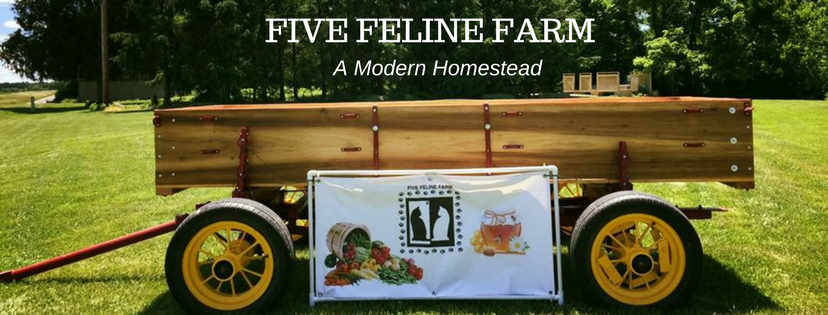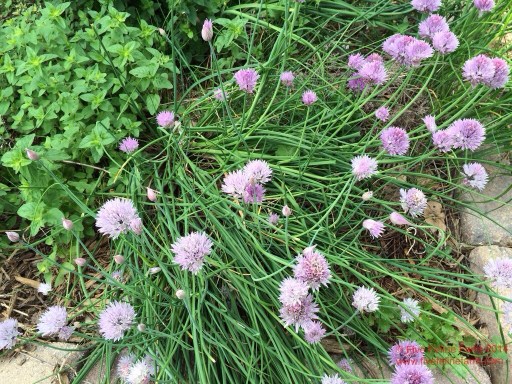What does it mean to be a modern homesteader?
Homesteading conjures up visions of living off the land; growing vegetables, preserving food, cooking at home, harvesting wildlife for protein, and rarely communicating with the outside world.
First a disclaimer: We are not going to harvest wildlife and are not hermits. But, we do take considerable joy in gardening, cooking at home, and preserving food.
Let Julia tell you a story that exemplifies how we homestead the modern way.
Last fall I was determined to make sourdough bread. From scratch and by hand. I acquired a mason jar of starter from a lady who also provided encouraging words:
“It’s so easy and forgiving.”
“You really can’t go wrong,” she said.
All I can say is: the lady lies.
I cradled my jar of starter all the way home. I fed it according to the instructions. My goal was simple: maintain a healthy sourdough starter and provide all the fresh, homemade bread my household could consume.
The struggle began.
The first attempt was a sloppy wet mess that poured out across the baking stone into a loaf strongly resembling a stepping stone.
Ok. I knew what went wrong. Too much water. I could easily adjust that for the next attempt. The next loaf was sure to be perfect.
Not only was it not perfect, it was inedible.
I tried and struggled to make even a mediocre loaf. I made minor adjustments and major adjustments. I changed recipes. In time, I was convinced I had killed the starter, so I called on the wisdom of a friend. He makes lovely sourdough bread every week. We talked through each step from maintaining the starter to baking the loaf. He diagnosed my problem as not a dead starter but a starving one and prescribed a healthy feeding of whole wheat flour.
With renewed hope, I went back to the kitchen and tried again.
In the meantime, I refused to buy bread, convincing myself with each loaf attempt this would be the one that worked. For those of you who are unfamiliar with baking sourdough bread, this is a multi-day process. Feeding and refreshing the starter to baking a loaf will take anywhere from 24 hours to 4 days. Each time I thought everything was going well, until a few days later it wasn’t.
I eventually did succeed in killing my starter. Officially and without doubt this time. Mold and an unpleasant smell were all the post mortem needed.
But I was still hungry for bread, made from scratch and baked in my own kitchen. Bread is the staff of life and a dietary base in almost all cultures. There are quick breads, yeast breads and of course those pesky sourdough breads. You can buy it almost anywhere, but oh the luxury of baking it yourself.
Enter the bread machine.

Yes, that 1986 invention that became popular in the 1990’s and was all the rage for a decade or so. These machines promise fresh home made bread any day of the week at almost any pre-scheduled time.
Just add ingredients, push a button and presto! Home-made bread.
It really is that easy.
I am on my 3rd bread machine now.
My first one was a cheap model, just to see what all the fuss was about. Those early machines had some flaws, primarily an odd shaped loaf that was difficult to slice for a toaster. But they worked. I used it for awhile, then the novelty wore off and it was relegated to a shelf in the laundry room.
A few years later, I tried a Williams-Sonoma model. Definitely an upgrade with a dough function and multiple loaf size options. Again, I used it for awhile and then it lived on a shelf in the basement. I don’t really recall any specific complaints about the machine itself, other than some rust developing in the bottom. It still had an odd loaf shape.
After the sourdough debacle, I purchased a Breville. The 1.5 pound loaf cycle mimics the shape of a store bought loaf enough that a slice fits quite well in the toaster. I dusted off an old cookbook dedicated to bread machine recipes.
I am in home baked bread heaven.
Most of the time, I just layer the ingredients; liquids and salt first, then flour and yeast. Adjust for the type of bread (basic, whole grain, dough only, etc.), push the start button and my work is done. In 3 1/2 hours, fresh fragrant bread is my reward.
The hardest part of my new system is the promising aroma as bread bakes, finally removing a beautiful loaf from the machine and then the agony of waiting until it is cool enough to slice. Experience taught me slicing into a hot loaf is difficult and squishy.
Confession: I’m in love with my bread machine.
I can not recall the last time I bought a loaf of bread at the store. I know what goes into each loaf and exactly what day it was made. I have decided not to be embarrassed that I am using a bread machine to accomplish this task.
This is what it means to be a modern homesteader.
Do what you can to live a more simple life like our grandparents and great-grandparents used to do. Eat fresh, home baked bread. But if you prefer to use a modern appliance to accomplish that goal…do it.
No embarrassment, no shame, no excuses.







